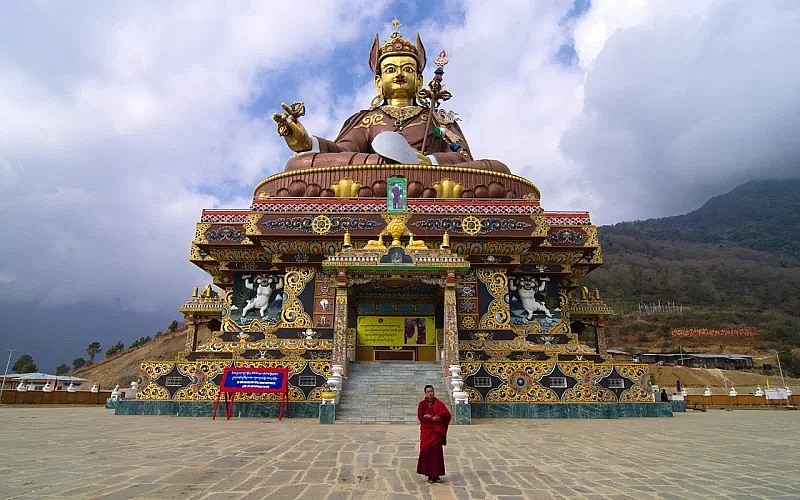 |
In the expansive landscape of Buddhist literature, the figure of Padmasambhava, also known as Guru Rinpoche, stands as a beacon of spiritual wisdom and guidance. His impactful presence in the literary traditions of Bhutan and Tibet is both profound and varied, comprising of history, mythology, philosophy, and folklore. This article journeys through a comparative exploration of Padmasambhava’s depictions in Bhutanese and Tibetan literature, emphasizing cultural subtleties, shared stories, and the exclusive ways each tradition honors the revered “Lotus-Born Master.”
The chronicles of Padmasambhava are intricately interwoven into Bhutanese literature, highlighting the guru’s essential part in establishing Buddhism in Bhutan. He is depicted as a divine figure who tamed local deities and demons, transforming them into guardians of the Dharma. In the ‘Bumthang Chö’, a text of ancient Bhutanese verse, Padmasambhava’s miraculous accomplishments are recounted with poetic elegance, revealing a narrative style that has its roots in Bhutan’s oral storytelling tradition.
In particular, the text highlights Padmasambhava’s mastery of esoteric teachings, his ability to tame demonic forces, and his role in establishing Buddhism in Tibet. In contrast to other Buddhist biographies, the Padma Thangyig Serteng offers a unique perspective on the life of Padmasambhava. It provides a detailed account of his spiritual conquests and his relationships with other Tibetan religious figures, as well as his interactions with non-Buddhist figures, such as the Bon priests. The text also includes descriptions of his magical abilities and his supernatural powers. By providing an in-depth look at the life of Padmasambhava, the Padma Thangyig Serteng offers a valuable resource for those seeking to understand the history and teachings of Tibetan Buddhism.
One notable divergence between the Bhutanese and Tibetan depictions of Padmasambhava lies in their emphasis on different aspects of his life. Bhutanese literature often emphasizes his interactions with local spirits, as it portrays him as a spiritual transformer of the Bhutanese landscape. Meanwhile, Tibetan texts tend to focus more on his teachings and spiritual practices, thus highlighting his contributions to the development of Vajrayana Buddhism.
However, there are also remarkable similarities. In both cultures, Padmasambhava is seen as a savior figure. His voyage is portrayed as a spiritual journey, conquering numerous obstacles to spread the teachings of Buddhism. Furthermore, the guru’s Eight Manifestations, which signify his various aspects and activities, are also a frequent motif in both Bhutanese and Tibetan narratives.
The portrayal of Padmasambhava’s consorts offers an intriguing area of comparison. In the Bhutanese Yeshe Tsogyal narrative, found in texts such as “The Biography of Yeshe Tsogyal,” her role is highlighted as the guru’s spiritual partner and a wisdom dakini. Tibetan literature, however, expands upon this by providing detailed descriptions of her spiritual journey and enlightenment.
While Bhutanese and Tibetan literature both portray Padmasambhava in distinct ways, they are united in their reverence for the Lotus-Born Master. These narratives, in spite of their cultural divergences, express a shared goal: to spread the profound wisdom of Buddhism through the life story of one of its most respected figures.
Understanding these similarities and differences deepens our appreciation of the richness and diversity of Buddhist literature. As we journey through the words and worlds of these texts, we can share in Padmasambhava’s enlightenment and appreciate the depth of his legacy in Bhutanese and Tibetan literary traditions.



